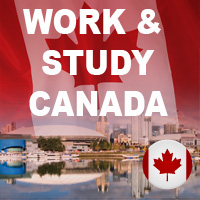MONTREAL BEST CITY IN CANADA FOR UNIVERSITY STUDENTS
Montreal was just ranked the best city for university students in Canada, and the 10th best in the world.The survey, conducted by the British firm QS, has Montreal beating out Chicago and New York City, and just behind Paris, London and Boston. Montreal scored so highly based heavily on its quality of life and number of international students.
Montreal has four universities and has a higher percentage of university students in its population than all other major North American cities. What’s more, the average yearly tuition paid by Quebec students is the lowest in Canada. As well, the province offers a number of generous student aid programs.
While tuition for out-of-province and international students studying in Quebec is significantly higher, the children of new immigrants to the province can take advantage of the low in-province tuition rates.
MANITOBA PROVINCIAL NOMINEE PROGRAM – INTERNATIONAL STUDENT STREAM
international Student stream falls under the Priority Assessment Stream of the Manitoba Provincial Nominee Program. Under this category, international students can immigrate to Manitoba and apply for permanent residence status in Canada. Graduates from a Manitoba post-secondary educational institute who have a regular employment offer from a Manitoba employer, which is related to what they have studied are eligible to apply for the Manitoba Provincial Nominee Program.
Below are few of the requirements for the students:
- The applicants applying under the category for overseas students must be the graduates from a Manitoba post-secondary program.
- An open work permit for the post graduates in Manitoba has to be applied for with the Canadian High Commission.
- Applicants are also required to continue working with an employer in Manitoba for six months at the least, at the time of filing the application.
- They must have a permanent and regular job offer from their employers with whom they have been working for last six months or more.

As far as the post-graduate open work permit is concerned, prospective applicants of the International Students Stream of the MPNP can apply for the same with the CIC. A maximum of ninety days is given after the completion of their academic program to apply for this work permit. For your information, graduates in Canada from other Canadian provinces can also be eligible for the Manitoba Provincial Nominee Program.
 STUDENT WORK VISA FOR CANADA
STUDENT WORK VISA FOR CANADA
Many foreign students studying in Canada need to work to pay their bills while in Canada. Our government has a visa for students to work while studying.
If you are a full time student (at least 15 hours a week) you can work on campus without a work visa. For students wanting to work off campus, you must have been studying in Canada for the past 6 months and be registered for the upcoming session. You will have to submit to Citizenship and Immigration Canada form IMM 5580. If you are approved, you will be allowed to work off campus.
International students choose Canada as their preferred choice of study in the world.
Superior Education System:
The high standards of the Canadian educational system
 and outstanding quality of Canadian institutions are acknowledged globally. Canadian students consistently rank among the best in the world.
and outstanding quality of Canadian institutions are acknowledged globally. Canadian students consistently rank among the best in the world.
Low Tuition Fees:
Comparison studies with such countries as the USA, UK, Australia, and New Zealand show foreign students can save considerably on their tuition by studying in Canada; in fact, fees in US public universities were almost 1.3 higher than fees for Bachelor Degrees in Canada and more than double to study at US private university.
Canadian Work Experience:
Gain Canadian Work experience while studying by working part time on-campus without a work permit and off-campus with a work permit. In Co-op and internship Programs, where work experience is part of the curriculum, with a Work Permit.
Post-graduate work permits:
Upon completion of studies and related to field of study can help you attain higher score for Immigration to Canada.
New Canada Experience Class:
Help Foreign Students apply for Permanent Residence while remaining in Canada.
Spouses/common-law partners can work:
Spouses/common-law partners of international students are eligible to work in Canada while their partners study.
WHY STUDY IN CANADA?
International students choose Canada as their preferred choice of study in the world.
Superior Education System:
The high standards of the Canadian educational system
 and outstanding quality of Canadian institutions are acknowledged globally. Canadian students consistently rank among the best in the world.
and outstanding quality of Canadian institutions are acknowledged globally. Canadian students consistently rank among the best in the world.Low Tuition Fees:
Comparison studies with such countries as the USA, UK, Australia, and New Zealand show foreign students can save considerably on their tuition by studying in Canada; in fact, fees in US public universities were almost 1.3 higher than fees for Bachelor Degrees in Canada and more than double to study at US private university.
Canadian Work Experience:
Gain Canadian Work experience while studying by working part time on-campus without a work permit and off-campus with a work permit. In Co-op and internship Programs, where work experience is part of the curriculum, with a Work Permit.
Post-graduate work permits:
Upon completion of studies and related to field of study can help you attain higher score for Immigration to Canada.
New Canada Experience Class:
Help Foreign Students apply for Permanent Residence while remaining in Canada.
Spouses/common-law partners can work:
Spouses/common-law partners of international students are eligible to work in Canada while their partners study.